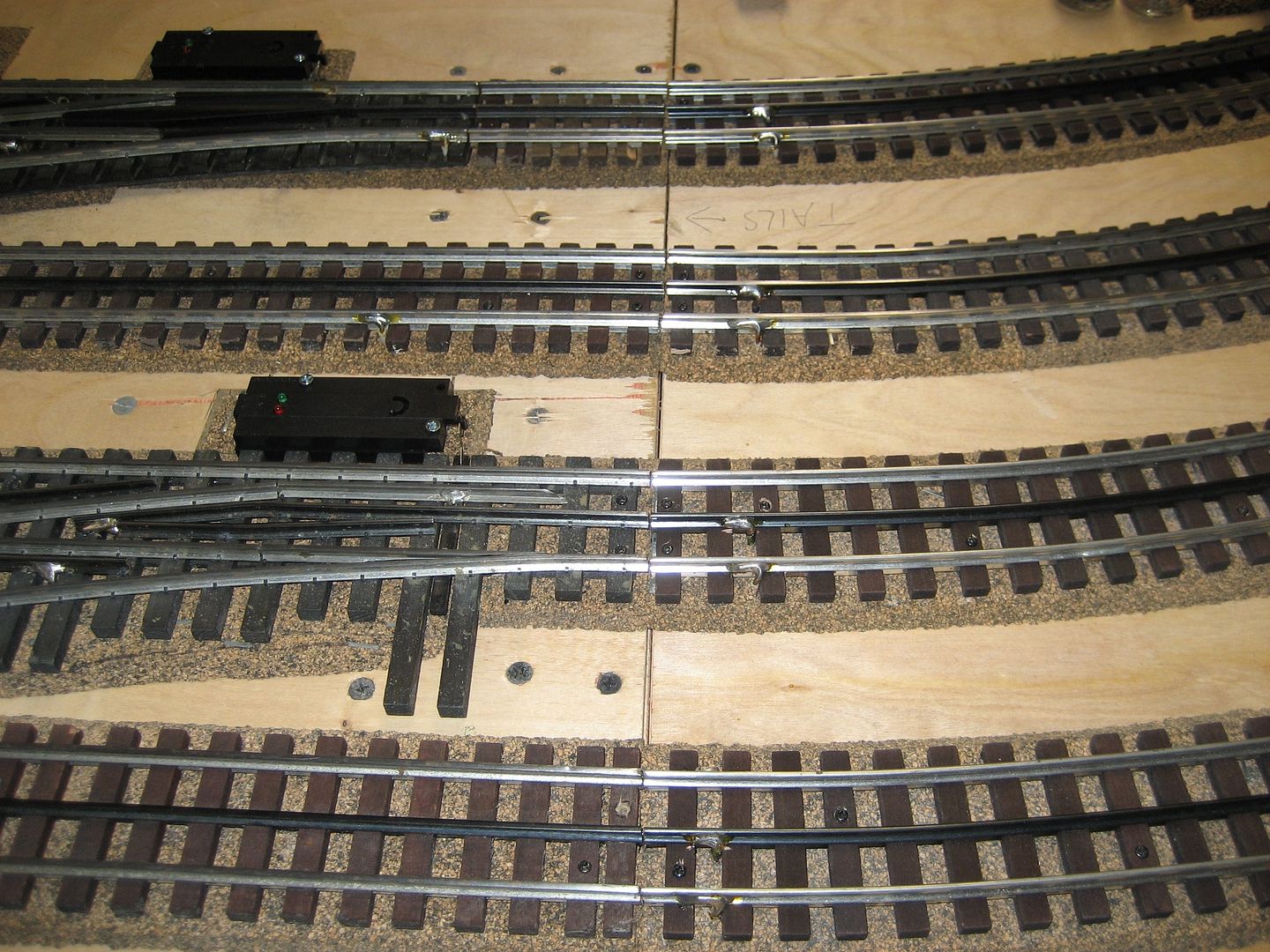When I planned my now-under-construction layout, I decided to build the benchwork/tables in sizes no greater than 4'x8', to facilitate layout disassembly and relocation or scrapping, at some point in the future when I'm gone or unable to live in this house. Of course, this means lots of tracks crossing module boundaries, with not all such boundaries perpendicular to the crossing tracks. There seem to be at least three approaches to track laying and connection at the module boundaries:
1. Assemble all of the modules in their final locations. Lay track without regards to module boundaries. When the layout is dismantled, then worry about the boundaries and cut the tracks there at that time.
2. Join adjacent modules, lay track across the boundaries and secure it, then cut the rails at the boundaries, separate the modules, add track pins and rejoin. This could get tricky with yard tracks.
3. Cut track precisely at module edges, but leave the last 6" or so, approaching the boundary, loose and unballasted. When modules are connected finally, small errors in track alignment can be resolved at that time and the track then secured in its final position and ballasted.
Are there any opinions on which of these approaches, or something else, should be done in this situation? I'm far enough along to start laying track on half of the layout.




